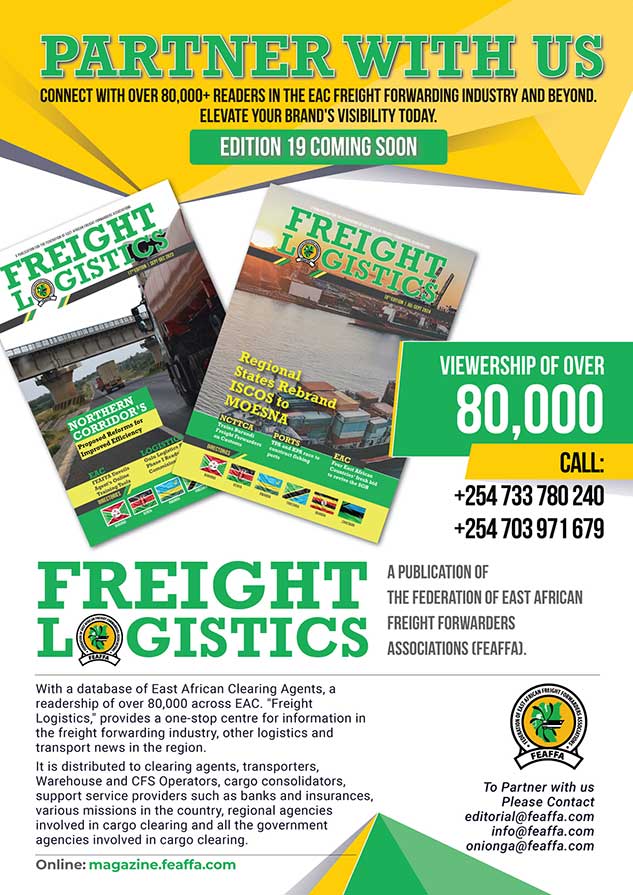Zambia’s entry into the Central Corridor Transit Transport Facilitation Agency (CCTTFA) is already reshaping the regional logistics landscape. At the 14th Ordinary Meeting of the Inter-State Council of Ministers for CCTTFA, held on 18 June 2025 in Dar es Salaam, Zambia reaffirmed its strong commitment to regional transport integration, placing border infrastructure development at the heart of its strategy.
Led by Hon. Museba Frank Tayali, Minister of Transport and Logistics, the Zambian delegation presented a compelling case for how enhanced border posts will serve as critical catalysts for economic transformation not only for Zambia but for the wider Great Lakes region.
“Zambia’s commitment to the Central Corridor is not symbolic, it is infrastructural, digital, and transformational,” said Minister Tayali. “Efficient borders are the arteries of our economy.”
Since officially joining the Central Corridor, Zambia has rapidly aligned its national priorities with regional goal, positioning border modernization as a core pillar of trade facilitation and connectivity.
Nakonde/Tunduma OSBP: A Gateway Under Transformation
The Nakonde/Tunduma One Stop Border Post (OSBP)—a vital entry point between Zambia and Tanzania is undergoing major improvements. Phase One, supported by TradeMark Africa, is over 70% complete and features upgrades such as a high-capacity truck scanner, expanded access roads, and state-of-the-art ICT infrastructure.
Phase Two, currently under procurement with World Bank funding under the TRACER Project, will focus on customs clearance facilities, staff training, and improved logistics coordination.
“Once fully operational, the Nakonde OSBP will cut border dwell times by up to 60%, reducing transport costs and enhancing trade fluidity,” noted a senior CCTTFA official during the Dar es Salaam meeting.
These developments are expected to drastically reduce congestion, eliminate procedural redundancies, and improve the flow of goods along the Central Corridor, which links the Port of Dar es Salaam to Zambia, Malawi, and the DRC.
Kasumbalesa Border Upgrade: Africa’s Busiest Crossing Gets a US$110M Boost
Further west, Zambia is accelerating modernization efforts at the Kasumbalesa border post its busiest crossing point and a key SADC trade artery. A landmark US$110 million concession agreement has been signed to overhaul the post.
“Kasumbalesa is the pulse of cross-border trade with the DRC. This investment will not only decongest the area but also make trade faster, safer, and more predictable,” said Mr. Nyambe Muyumbana, Director of Infrastructure at Zambia’s Ministry of Transport.
Planned developments include a 2,000-truck capacity holding yard and the establishment of a multi-facility economic zone. Once complete, the upgraded Kasumbalesa is expected to significantly reduce transit times and boost throughput, benefiting regional trade under SADC, COMESA, and the EAC.
Complementing these border developments is Zambia’s ambitious move to digitize and modernize its entire transit corridor. A US$54 million SMART Corridor System—from Nakonde through Lusaka to the Copperbelt—is in procurement with World Bank support.
“This system will provide end-to-end cargo visibility, enhance safety, and allow real-time response to traffic incidents,” explained an official from the Road Transport and Safety Agency (RTSA).
Simultaneously, critical road infrastructure is being upgraded. The Mpika–Nakonde section is nearing completion with African Development Bank financing, while the 203km Serenje–Mpika road is under procurement via TRACER and will break ground by late 2025. The dual carriageway linking Lusaka to Ndola—one of Zambia’s busiest trade corridors—has reached 25% completion under a Public-Private Partnership model.
Zambia’s infrastructure ambition extends beyond its borders. Through the AUDA-NEPAD Service Delivery Mechanism, the government is preparing Mpulungu Port for enhanced trade via Lake Tanganyika. Technical assessments are underway to facilitate cargo movement with the DRC and other neighbours.
“Our vision is to develop Mpulungu into a green, efficient port that anchors inland waterway trade in the Great Lakes region,” said Mr. Joseph Mukonka, Director of Ports and Inland Shipping.
Meanwhile, negotiations on the concessioning of the Tanzania-Zambia Railway Authority (TAZARA) are nearing conclusion. A final deal with a Chinese logistics operator is expected by July 2025 to revive this critical rail link to Dar es Salaam and boost multimodal connectivity.
Zambia’s bold infrastructure push anchored in strategic border upgrades, digital transformation, and regional partnerships, is unlocking new efficiencies across the Central Corridor. Backed by institutions like the World Bank, TradeMark Africa, and AfDB, these initiatives are designed to lower logistics costs, improve trade predictability, and fast-track regional economic integration.
With Nakonde and Kasumbalesa leading the charge, Zambia is proving that modern, data-driven borders are no longer a dream—they are the future of African trade.
This article was published by Githua Kihara, an editorial consultant for FEAFFA’s Freight Logistics Magazine. For any inquiries, please contact us via email at editorial@feaffa.com or freightlogistics@feaffa.com, or reach out to Andrew Onionga directly at onionga@feaffa.com / +254733780240.





